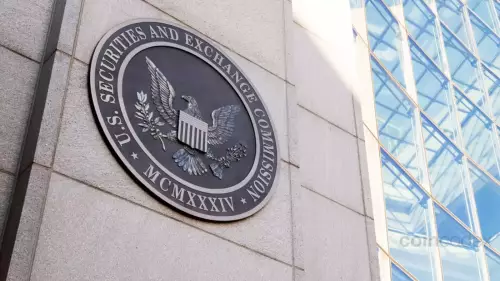Explore the evolving landscape of cryptocurrency payment adoption, focusing on merchant statistics, the rise of stablecoins, and the impact of blockchain integrations on global finance.

Cryptocurrency Payment Adoption: Analyzing Merchant Statistics and Trends
The intersection of cryptocurrency, payment adoption, and merchant statistics is rapidly evolving. This article dives into recent trends, highlighting the increasing adoption of stablecoins and the impact of blockchain technology on mainstream finance.
The Rise of Stablecoins in Crypto Payroll
Dogecoin's (DOGE) volatility, with its price recently dropping about 25% since mid-September, underscores the challenges of using such cryptocurrencies for salary payments. Its speculative nature and increasing supply make it unsuitable for stable transactions. This volatility can lead to budgeting challenges for both employers and employees, as the value of their earnings can fluctuate dramatically.
As a result, more companies are turning to stablecoins like USD Coin (USDC) and Tether (USDT), which are pegged to fiat currencies, offering a more predictable financial value. Surveys indicate that nearly 10% of workers in the crypto sector now receive part of their salary in stablecoins, a number that has tripled in the last year. This transition not only protects employees against inflation but also aligns with growing institutional confidence in stablecoins.
Strategies for Mitigating Crypto Payroll Risks
For businesses looking to incorporate cryptocurrencies into their payroll systems, several strategies can help manage volatility:
- Pay Salaries in Stablecoins: Avoid price swings by compensating employees with stablecoins.
- Provide Payment Options: Allow employees to choose between Dogecoin and stablecoins/fiat to balance potential earnings with risk management.
- Adopt Risk Management Practices: Limit exposure by capping the proportion of salary paid in DOGE or converting payments to fiat upon receipt.
- Stay Updated on Market Conditions: Monitor price trends and broader economic factors to adapt payroll strategies.
- Seek Expert Advice: Consult with legal and tax advisors to ensure compliance with crypto payroll regulations.
Stellar's Role as a Global Payment Hub
Stellar is emerging as a key player in the global payment landscape, with major payment giants like Visa, PayPal, and MasterCard integrating with its network. These collaborations highlight the convergence of traditional finance (TradFi) and decentralized finance (DeFi), making blockchain technology an attractive solution for fast, secure, and low-cost transactions.
Visa's integration of Stellar's distributed ledger technology (DLT) into its stablecoin settlement network enhances transaction speed and network diversity. PayPal is integrating its stablecoin PayPal USD (PYUSD) into the Stellar network to leverage its fast, low-cost payment capabilities. Mastercard and Stellar have joined forces to integrate the Crypto Credential solution, enhancing the security and efficiency of crypto transactions.
XLM Price and Market Impact
Driven by these collaborations, Stellar's XLM token has seen increased acceptance and growth. Despite some fluctuations, XLM has experienced remarkable growth since its launch, reflecting the network's significant moves in the crypto space.
The Future is Bright (and Stable!)
As the cryptocurrency space continues to evolve, the trend toward stablecoins and blockchain integrations is undeniable. While Dogecoin's volatility serves as a cautionary tale, the rise of stablecoins and the strategic collaborations of networks like Stellar point to a future where crypto payments are more accessible, secure, and, most importantly, stable. Who knew finance could be this exciting? It’s like watching a financial thriller, but with less suspense and more actual solutions!














































































